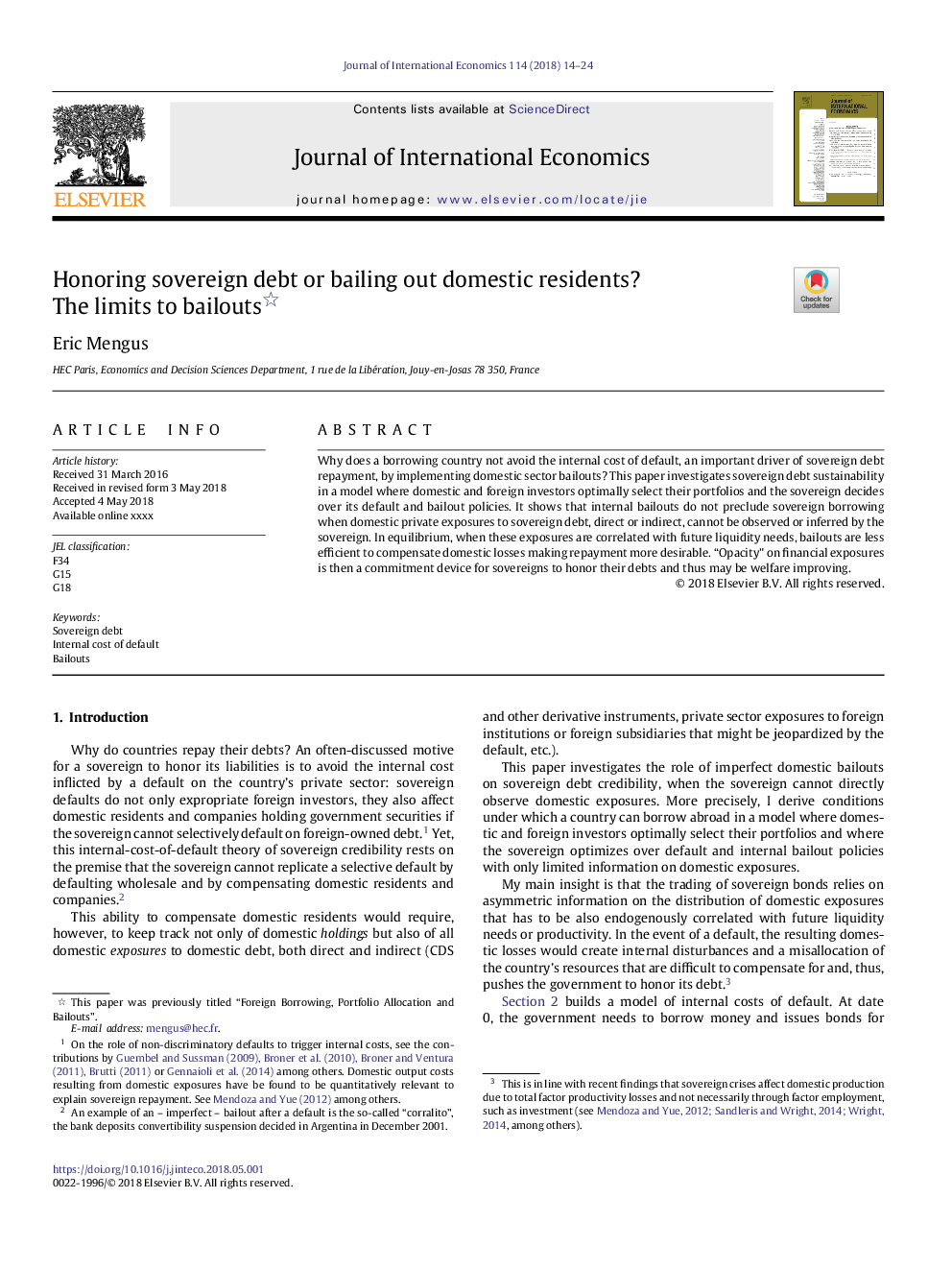| Article ID | Journal | Published Year | Pages | File Type |
|---|---|---|---|---|
| 7363792 | Journal of International Economics | 2018 | 11 Pages |
Abstract
Why does a borrowing country not avoid the internal cost of default, an important driver of sovereign debt repayment, by implementing domestic sector bailouts? This paper investigates sovereign debt sustainability in a model where domestic and foreign investors optimally select their portfolios and the sovereign decides over its default and bailout policies. It shows that internal bailouts do not preclude sovereign borrowing when domestic private exposures to sovereign debt, direct or indirect, cannot be observed or inferred by the sovereign. In equilibrium, when these exposures are correlated with future liquidity needs, bailouts are less efficient to compensate domestic losses making repayment more desirable. “Opacity" on financial exposures is then a commitment device for sovereigns to honor their debts and thus may be welfare improving.
Keywords
Related Topics
Social Sciences and Humanities
Economics, Econometrics and Finance
Economics and Econometrics
Authors
Eric Mengus,
